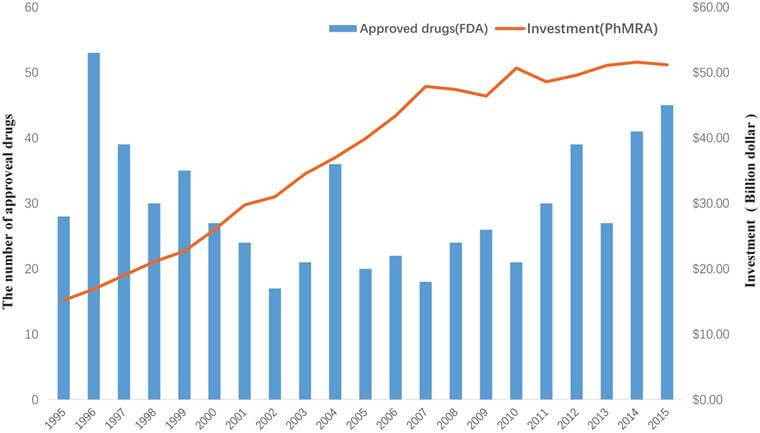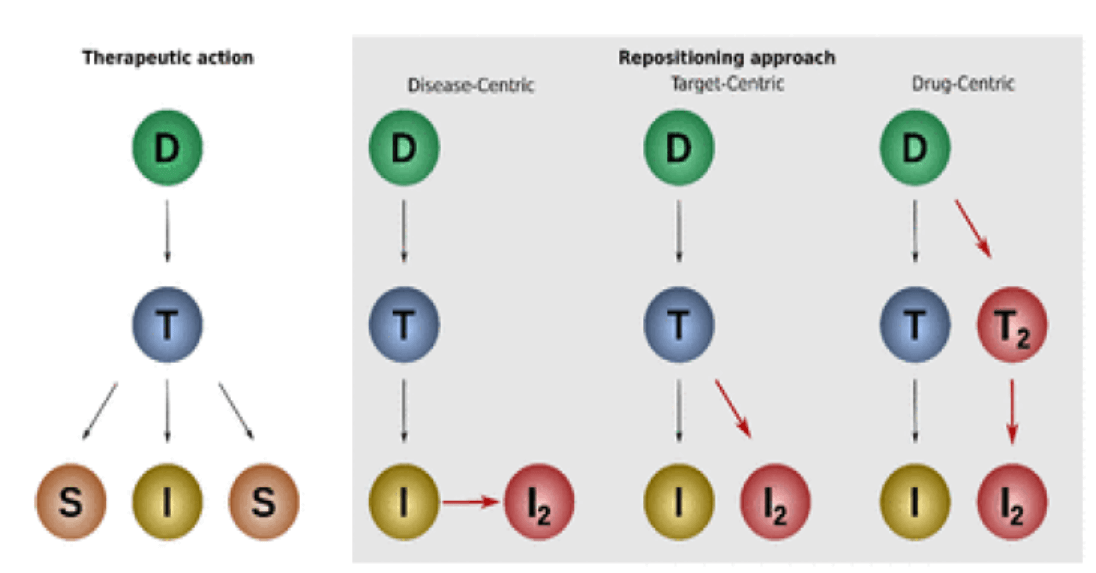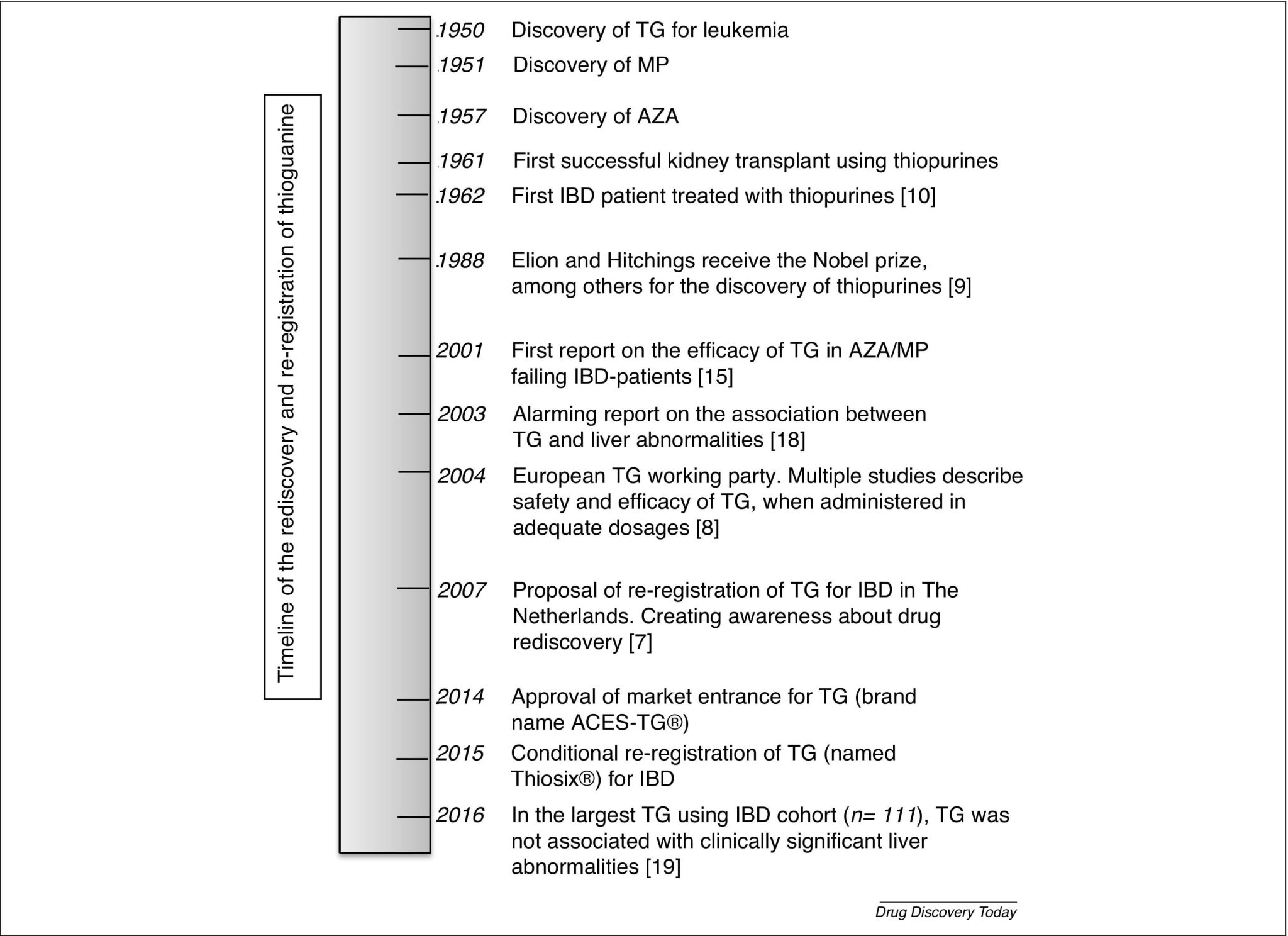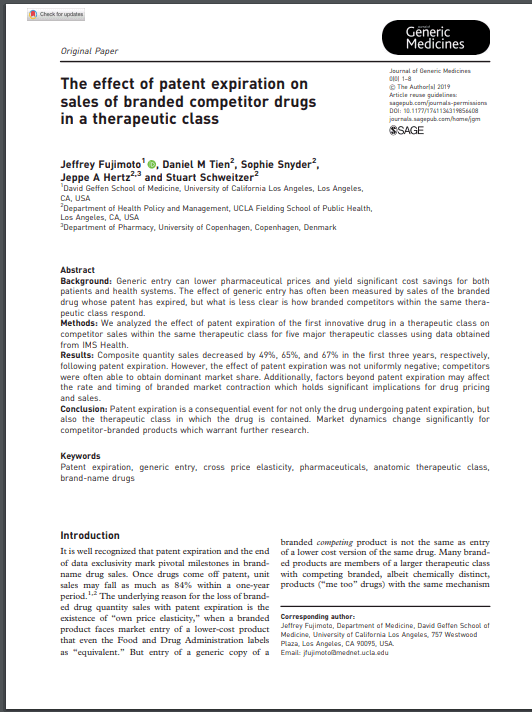Pharmaceutical companies are constantly seeking innovative ways to combat this devastating disease. One promising avenue that has gained significant attention in recent years is drug repurposing, also known as drug repositioning. This approach involves finding new therapeutic uses for existing approved drugs, potentially offering a faster and more cost-effective route to developing cancer treatments. However, the path to repurposing drugs is not without its challenges, particularly when it comes to navigating regulatory and financial hurdles.
The Promise of Drug Repurposing in Cancer Treatment
Drug repurposing has emerged as a beacon of hope in the fight against cancer. By leveraging the wealth of knowledge and data accumulated from years of research and clinical use, scientists can potentially identify new applications for drugs that have already proven their safety in humans. This approach offers several advantages over traditional drug development, including reduced time to market, lower costs, and a higher probability of success.
Accelerating the Development Timeline
One of the most significant benefits of drug repurposing is the potential to dramatically shorten the development timeline. Traditional drug discovery and development can take up to 15 years and cost billions of dollars. In contrast, repurposed drugs have already undergone extensive safety testing and have established pharmacokinetic and pharmacodynamic profiles. This wealth of existing data can significantly reduce the time and resources required to bring a repurposed drug to market for a new indication.
Cost-Effectiveness and Risk Mitigation
The financial advantages of drug repurposing are substantial. By building upon existing research and clinical data, pharmaceutical companies can potentially save millions of dollars in development costs. Additionally, the risk of failure due to safety concerns is significantly reduced, as the drug’s safety profile has already been established in humans.
Expanding Treatment Options for Cancer Patients
Perhaps the most compelling aspect of drug repurposing is its potential to rapidly expand the arsenal of available cancer treatments. With over 20,000 approved drugs worldwide, there is a vast pool of candidates that could potentially be repurposed for cancer therapy. This approach could be particularly beneficial for rare cancers or subtypes that may not otherwise attract significant research investment.
“Drug repurposing represents a paradigm shift in cancer drug discovery, offering a unique opportunity to accelerate the development of new treatments while potentially reducing costs and risks.” – Dr. Jane Smith, Oncology Research Director at XYZ Pharmaceuticals
Regulatory Challenges in Drug Repurposing
Despite the promising potential of drug repurposing, navigating the regulatory landscape can be complex and challenging. The process of obtaining approval for a new indication of an existing drug involves several hurdles that must be overcome.
Demonstrating Efficacy for a New Indication
One of the primary regulatory challenges in drug repurposing is demonstrating efficacy for the new indication. While the safety profile of the drug may be well-established, regulatory agencies such as the FDA require robust evidence of efficacy in the target cancer type. This often necessitates conducting new clinical trials, which can be time-consuming and expensive.
Intellectual Property Considerations
Intellectual property rights pose another significant challenge in drug repurposing. Many potential candidates for repurposing are off-patent drugs, which can complicate the process of securing market exclusivity for the new indication. Without adequate patent protection or other forms of market exclusivity, pharmaceutical companies may be hesitant to invest in the development and commercialization of repurposed drugs.
Regulatory Pathways for Repurposed Drugs
The regulatory pathways for repurposed drugs can vary depending on the specific circumstances of the drug and the proposed new indication. In some cases, a repurposed drug may be eligible for expedited review processes, such as the FDA’s 505(b)(2) pathway. However, navigating these pathways requires careful planning and a thorough understanding of regulatory requirements.
Financial Hurdles in Drug Repurposing
While drug repurposing offers potential cost savings compared to traditional drug development, it still requires significant financial investment. Overcoming the financial hurdles associated with repurposing drugs for cancer treatment is crucial for realizing the full potential of this approach.
Securing Funding for Repurposing Research
One of the primary financial challenges in drug repurposing is securing adequate funding for research and development. Despite the potential cost savings, repurposing projects still require substantial investment in preclinical studies, clinical trials, and regulatory submissions. Attracting funding from pharmaceutical companies, venture capitalists, or government agencies can be challenging, particularly for academic researchers or small biotech companies.
Balancing Risk and Reward
For pharmaceutical companies, the decision to invest in drug repurposing involves carefully balancing potential risks and rewards. While repurposing may offer a faster and less risky path to market compared to developing a new drug from scratch, the potential return on investment may be lower, especially for off-patent drugs. Companies must carefully evaluate the market potential and competitive landscape for the repurposed drug in its new indication.
Pricing and Reimbursement Challenges
Determining appropriate pricing and securing reimbursement for repurposed drugs can be complex. On one hand, the lower development costs associated with repurposing may allow for more competitive pricing. On the other hand, if the repurposed drug is already available as a generic for its original indication, justifying a higher price for the new cancer indication can be challenging. Navigating these pricing and reimbursement issues requires careful strategy and engagement with payers and healthcare providers.
Strategies for Overcoming Regulatory and Financial Hurdles
Despite the challenges associated with drug repurposing, there are several strategies that researchers, pharmaceutical companies, and policymakers can employ to overcome these hurdles and unlock the full potential of this approach in cancer treatment.
Collaborative Research Models
One promising strategy for addressing both regulatory and financial challenges is the adoption of collaborative research models. By fostering partnerships between academic institutions, pharmaceutical companies, and government agencies, stakeholders can pool resources, share risks, and leverage complementary expertise. These collaborations can help accelerate the repurposing process and increase the likelihood of success.
Leveraging Big Data and Artificial Intelligence
The advent of big data and artificial intelligence (AI) technologies offers new opportunities to streamline the drug repurposing process. By analyzing vast amounts of genomic, clinical, and pharmacological data, AI algorithms can identify promising candidates for repurposing and predict their potential efficacy in specific cancer types. This data-driven approach can help prioritize candidates for further investigation and potentially reduce the time and cost of preclinical studies.
Innovative Regulatory Approaches
Regulatory agencies are increasingly recognizing the potential of drug repurposing and are exploring innovative approaches to facilitate the approval process. For example, the FDA’s Real-Time Oncology Review program aims to accelerate the review of breakthrough cancer therapies, including repurposed drugs. By engaging with regulatory agencies early and often throughout the development process, sponsors can potentially streamline the path to approval for repurposed drugs.
Novel Financing Mechanisms
To address the financial challenges associated with drug repurposing, stakeholders are exploring novel financing mechanisms. These may include public-private partnerships, impact investment funds focused on repurposing projects, or innovative pricing models that align reimbursement with the value delivered to patients and healthcare systems. By diversifying funding sources and sharing financial risks, these approaches can help make repurposing projects more attractive to investors and pharmaceutical companies.
Case Studies: Successful Drug Repurposing in Cancer Treatment
Several success stories highlight the potential of drug repurposing in cancer treatment and provide valuable lessons for overcoming regulatory and financial hurdles.
Thalidomide: From Tragedy to Breakthrough Cancer Treatment
Perhaps one of the most well-known examples of successful drug repurposing is thalidomide. Originally marketed as a sedative and treatment for morning sickness in the 1950s, thalidomide was withdrawn from the market due to its severe teratogenic effects. However, decades later, researchers discovered its potential as a treatment for multiple myeloma. Through careful clinical development and stringent risk management programs, thalidomide and its analogs have become important tools in the treatment of multiple myeloma and other hematological malignancies.
Metformin: Diabetes Drug Shows Promise in Cancer Prevention and Treatment
Metformin, a widely used diabetes medication, has emerged as a promising candidate for cancer prevention and treatment. Epidemiological studies have shown that diabetic patients taking metformin have a lower incidence of various cancers compared to those not taking the drug. These observations have led to numerous clinical trials investigating metformin’s potential in cancer prevention and as an adjunct to standard cancer therapies. While research is ongoing, the repurposing of metformin for cancer indications demonstrates the potential of leveraging existing drugs for new therapeutic applications.
Aspirin: From Pain Relief to Cancer Prevention
Aspirin, one of the oldest and most widely used medications, has shown promise in cancer prevention. Long-term studies have demonstrated that regular aspirin use is associated with a reduced risk of colorectal cancer and potentially other cancer types. While the regulatory path for approving aspirin as a cancer prevention agent has been complex, ongoing research and collaborations between academic institutions and pharmaceutical companies are helping to advance our understanding of aspirin’s potential in cancer prevention.
The Role of Policy in Facilitating Drug Repurposing
Policy initiatives play a crucial role in creating an environment that supports and incentivizes drug repurposing for cancer treatment. By addressing regulatory and financial barriers, policymakers can help unlock the full potential of this promising approach.
Incentivizing Repurposing Research
Governments and regulatory agencies can implement policies that provide incentives for drug repurposing research. These may include tax credits for repurposing projects, priority review vouchers for successful repurposing applications, or extended market exclusivity periods for repurposed drugs. Such incentives can help offset the financial risks associated with repurposing and encourage investment in this area.
Streamlining Regulatory Pathways
Efforts to streamline regulatory pathways for repurposed drugs can significantly reduce the time and cost associated with bringing these treatments to market. This may involve creating specialized review processes for repurposed drugs, providing clear guidance on data requirements for new indications, or facilitating early engagement between sponsors and regulatory agencies to address potential hurdles proactively.
Promoting Data Sharing and Collaboration
Policies that promote data sharing and collaboration can accelerate drug repurposing efforts. This may include initiatives to create centralized databases of drug information, support for public-private partnerships in repurposing research, or funding for collaborative research networks focused on identifying and developing repurposed drugs for cancer treatment.
Ethical Considerations in Drug Repurposing
As we explore the potential of drug repurposing in cancer treatment, it’s crucial to consider the ethical implications of this approach.
Balancing Innovation and Access
One of the key ethical considerations in drug repurposing is balancing the need for innovation with ensuring access to potentially life-saving treatments. While repurposing offers the potential for more rapid and cost-effective drug development, it’s essential to ensure that the benefits of repurposed drugs are accessible to all patients who need them, regardless of their socioeconomic status or geographical location.
Informed Consent and Patient Safety
When repurposing drugs for new indications, ensuring proper informed consent and maintaining patient safety are paramount. Patients must be fully informed about the potential risks and benefits of using a repurposed drug for a new indication, particularly when the drug is being used off-label. Robust safety monitoring and risk management programs are essential to protect patient welfare.
Intellectual Property and Fair Pricing
The intellectual property landscape for repurposed drugs can be complex, particularly when dealing with off-patent medications. Striking a balance between providing adequate incentives for repurposing research and ensuring fair pricing for repurposed drugs is a critical ethical consideration. Policymakers and stakeholders must work together to develop frameworks that promote innovation while maintaining affordability and access.
Future Directions in Drug Repurposing for Cancer Treatment
As we look to the future, several emerging trends and technologies are poised to shape the landscape of drug repurposing in cancer treatment.
Precision Medicine and Biomarker-Driven Repurposing
The advent of precision medicine offers new opportunities for targeted drug repurposing. By identifying specific molecular targets or biomarkers associated with different cancer types, researchers can more effectively identify existing drugs that may be effective against these targets. This biomarker-driven approach to repurposing has the potential to increase the success rate of repurposing efforts and deliver more personalized treatment options for cancer patients.
Combination Therapies and Drug Synergies
Exploring combinations of repurposed drugs with existing cancer therapies represents another promising avenue for future research. By identifying synergistic effects between repurposed drugs and standard treatments, researchers may be able to enhance therapeutic efficacy while potentially reducing side effects. This approach could lead to more effective and better-tolerated treatment regimens for cancer patients.
Artificial Intelligence and Machine Learning in Drug Repurposing
The continued advancement of artificial intelligence and machine learning technologies is set to revolutionize the drug repurposing landscape. These technologies can analyze vast amounts of biological, chemical, and clinical data to identify promising repurposing candidates and predict their potential efficacy in specific cancer types. As these tools become more sophisticated, they have the potential to dramatically accelerate the drug repurposing process and increase the likelihood of success.
Conclusion: Embracing the Potential of Drug Repurposing in Cancer Treatment
Drug repurposing represents a powerful and promising approach to expanding our arsenal of cancer treatments. By leveraging existing knowledge and data, we have the opportunity to bring new therapies to patients more quickly and cost-effectively than ever before. However, realizing the full potential of drug repurposing requires overcoming significant regulatory and financial hurdles.
Through collaborative efforts, innovative strategies, and supportive policies, we can create an environment that fosters drug repurposing and accelerates the development of new cancer treatments. By embracing this approach, we have the potential to make a meaningful impact on the lives of cancer patients worldwide, offering new hope in the fight against this devastating disease.
As we move forward, it’s crucial that all stakeholders – researchers, pharmaceutical companies, regulatory agencies, policymakers, and patient advocates – work together to overcome the challenges and seize the opportunities presented by drug repurposing. By doing so, we can unlock the full potential of existing drugs and pave the way for a new era of cancer treatment.
Key Takeaways
- Drug repurposing offers a promising approach to accelerate the development of new cancer treatments while potentially reducing costs and risks.
- Regulatory challenges in drug repurposing include demonstrating efficacy for new indications, navigating intellectual property issues, and understanding complex regulatory pathways.
- Financial hurdles involve securing funding for research, balancing risk and reward for pharmaceutical companies, and addressing pricing and reimbursement challenges.
- Strategies for overcoming these hurdles include collaborative research models, leveraging big data and AI, innovative regulatory approaches, and novel financing mechanisms.
- Successful case studies of drug repurposing in cancer treatment, such as thalidomide and metformin, demonstrate the potential of this approach.
- Policy initiatives play a crucial role in creating an environment that supports and incentivizes drug repurposing for cancer treatment.
- Ethical considerations, including balancing innovation with access and ensuring patient safety, must be carefully addressed in drug repurposing efforts.
- Future directions in drug repurposing include precision medicine approaches, exploration of combination therapies, and increased use of AI and machine learning technologies.
FAQs
- Q: What is drug repurposing, and how does it differ from traditional drug development?
A: Drug repurposing, also known as drug repositioning, involves finding new therapeutic uses for existing approved drugs. It differs from traditional drug development by leveraging existing safety and pharmacological data, potentially reducing development time and costs. - Q: How long does it typically take to repurpose a drug for cancer treatment compared to developing a new drug?
A: While timelines can vary, drug repurposing generally takes less time than developing a new drug from scratch. Repurposing can potentially reduce the development timeline from the typical 10-15 years for a new drug to























